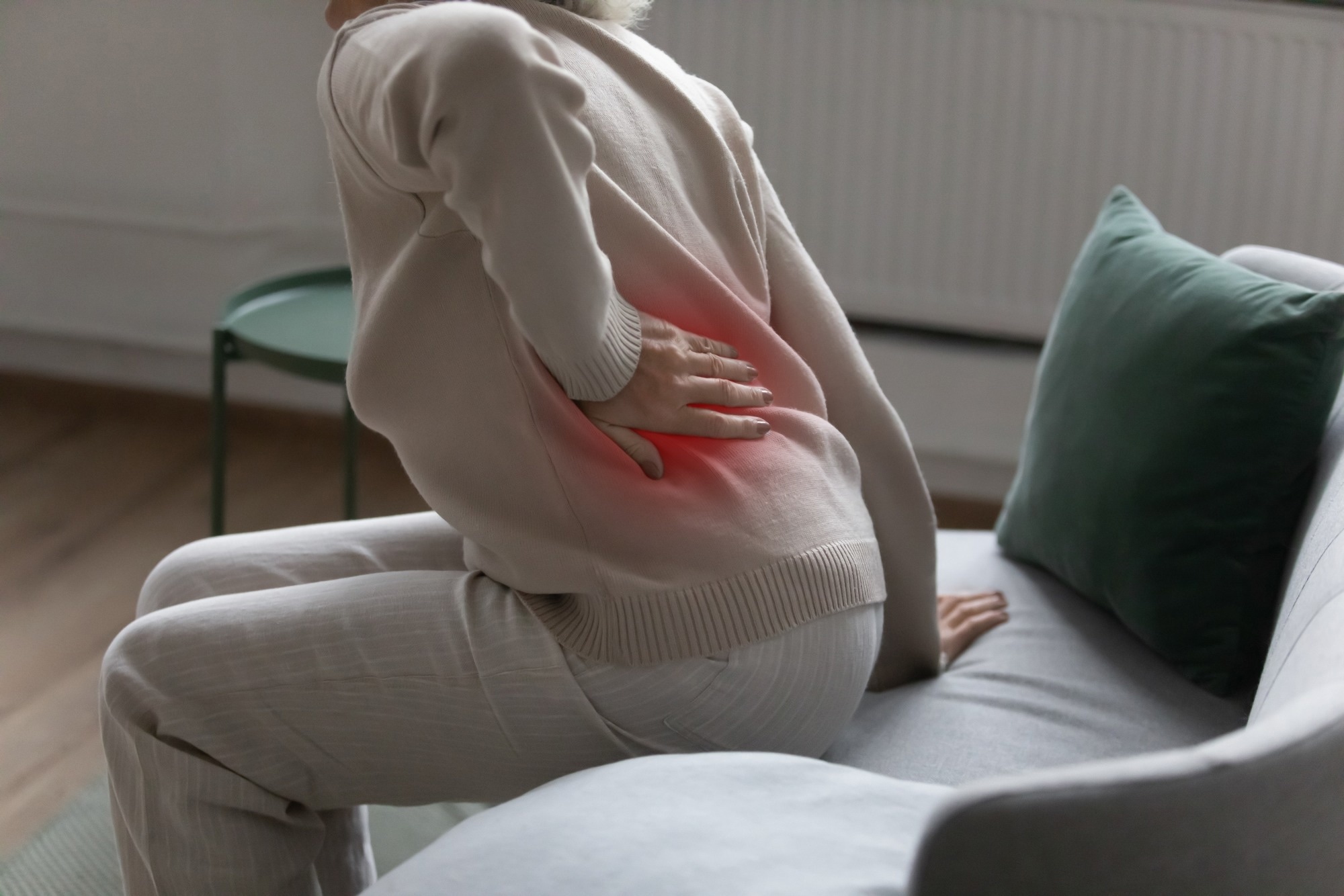In a recent study published in The Lancet, researchers performed a randomized controlled trial (RCT) in 157 primary care and emergency department (ED) sites across Australia.
This study was the first placebo-controlled trial of opioids in acute low back and neck pain.
 Study: Randomized trial reveals opioids relieve acute back pain no better than placebo. Image Credit: fizkes/Shutterstock.com
Study: Randomized trial reveals opioids relieve acute back pain no better than placebo. Image Credit: fizkes/Shutterstock.com
Background
Though several trials and systematic reviews have evaluated the use of opioids among patients with acute and lower back and neck pain, there is a lack of RCTs making similar assessments.
Nonetheless, assessing the effectiveness is opioid therapy is important as this therapy could relieve pain for a prolonged, indefinite period in these patients.
About the study
In the present placebo-controlled trial of opioids in acute low back and neck pain, Caitlin Jones et al. recruited patients who had lower back or neck pain of mild-to-moderate severity but remained pain-free for at least the last one month, i.e., before their current episode of spinal pain.
The primary endpoint of this study was a measure of pain intensity at six weeks post-randomization. The team randomized all participants to receive opioid therapy, i.e., oxycodone–naloxone extended-release, adjusting it every seven to 14 days.
They initiated at a dose of five mg drug twice daily. They titrated it to 10 mg two times a day till it reduced pain intensity to zero or one on a 10-point scale after five weeks of oxycodone exposure when participants were titrated off >1 week. They also provided naloxone to prevent constipation and improve blinding.
All participants received care mimicking current primary care clinical practice.
Trial results
The OPAL trial brought forth two notable findings.
First, two to four weeks of opioid therapy did not improve physical function, quality of life, time to recovery, or work absenteeism (global outcomes) for patients with acute back and neck pain.
Even after six weeks, opioid use offered no relief or functional improvement to placebo, with a mean difference in pain across both groups of 0.53 on a 10-point scale.
The other notable finding from the OPAL trial was that 25% of participants, i.e., 48\174 and 40\172 in the opioid and placebo groups, began opioid misuse at 52 weeks.
This trial fetched consistent results in sensitivity and subgroup analyses though data for 25% of participants were missing. Also, its blinding was largely successful.
Though adherence to medication was imperfect, it did not vary between opioid and placebo recipients, and, more importantly, the 20 to 40mg of morphine per day, i.e., the dose of oxycodone, was adequate.
Pain that follows an acute spinal injury is often chronic because it is recurrent, which might have resulted in non-response to opioid therapy.
Studies have also reported that low back pain transforms over a year into nociceptive pain, defined by altered nociceptive processing. Thus, people with nociplastic pain syndromes, including those with chronic lower back pain, also respond poorly to opioid therapy.
To measure drug abuse behavior among chronic pain patients for whom doctors prescribe opioid therapy, researchers commonly use the Current Opioid Misuse Measure (COMM).
In this study, 24\123 and 13\128 people in the opioid and placebo groups scored nine or more on the COMM, indicating they were at high risk for opioid misuse, a noteworthy finding for a low-risk group with brief opioid exposure in the past.
The COMM also investigates cognitive impairment and mood liability, i.e., trouble thinking clearly and controlling your anger, persisting beyond the period of opioid use. Yet, the authors could not clarify the number of patients at high risk of opioid misuse at 52 weeks.
Conclusion
The OPAL trial is the only RCT that, for the first time, raised the need to reexamine current clinical guidelines recommending opioids for patients with acute lower back and neck pain for whom other pharmacological treatments did not work or were contraindicated.
Nonetheless, this trial showed the feasibility of giving primary care to up to 67% of patients with lower back or neck pain with opioid therapy.